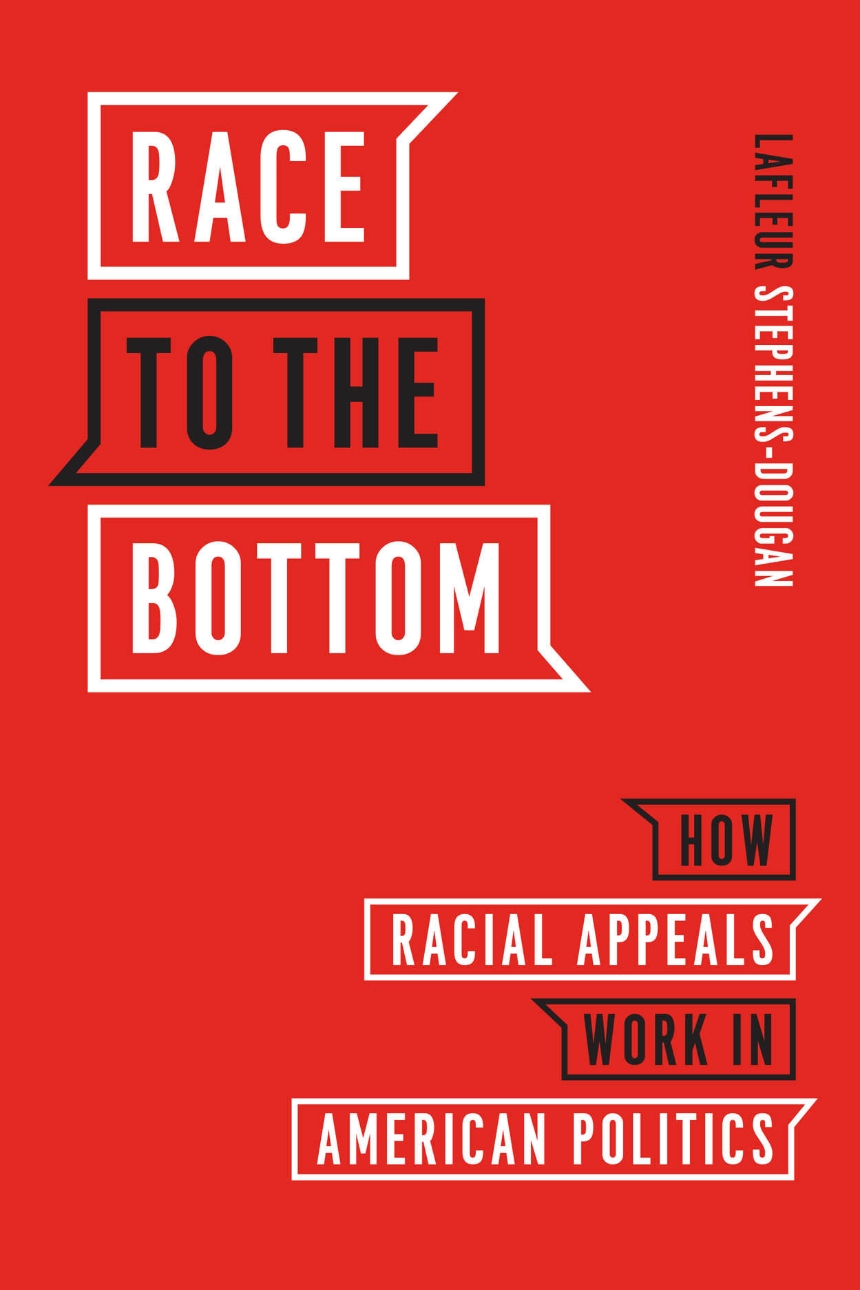Race to the Bottom
How Racial Appeals Work in American Politics
9780226698984
9780226698847
9780226699035
Race to the Bottom
How Racial Appeals Work in American Politics
African American voters are a key demographic to the modern Democratic base, and conventional wisdom has it that there is political cost to racialized “dog whistles,” especially for Democratic candidates. However, politicians from both parties and from all racial backgrounds continually appeal to negative racial attitudes for political gain.
Challenging what we think we know about race and politics, LaFleur Stephens-Dougan argues that candidates across the racial and political spectrum engage in “racial distancing,” or using negative racial appeals to communicate to racially moderate and conservative whites—the overwhelming majority of whites—that they will not disrupt the racial status quo. Race to the Bottom closely examines empirical data on racialized partisan stereotypes to show that engaging in racial distancing through political platforms that do not address the needs of nonwhite communities and charged rhetoric that targets African Americans, immigrants, and others can be politically advantageous. Racialized communication persists as a well-worn campaign strategy because it has real electoral value for both white and black politicians seeking to broaden their coalitions. Stephens-Dougan reveals that claims of racial progress have been overstated as our politicians are incentivized to employ racial prejudices at the expense of the most marginalized in our society.
Challenging what we think we know about race and politics, LaFleur Stephens-Dougan argues that candidates across the racial and political spectrum engage in “racial distancing,” or using negative racial appeals to communicate to racially moderate and conservative whites—the overwhelming majority of whites—that they will not disrupt the racial status quo. Race to the Bottom closely examines empirical data on racialized partisan stereotypes to show that engaging in racial distancing through political platforms that do not address the needs of nonwhite communities and charged rhetoric that targets African Americans, immigrants, and others can be politically advantageous. Racialized communication persists as a well-worn campaign strategy because it has real electoral value for both white and black politicians seeking to broaden their coalitions. Stephens-Dougan reveals that claims of racial progress have been overstated as our politicians are incentivized to employ racial prejudices at the expense of the most marginalized in our society.
200 pages | 14 line drawings, 12 tables | 6 x 9 | © 2020
Chicago Studies in American Politics
Political Science: American Government and Politics, Political Behavior and Public Opinion
Reviews
Table of Contents
List of Tables and Figures
Chapter 1: Introduction
Chapter 2: The Theory of Racial Distancing
Chapter 3: Obama as Racial Signaler
Chapter 4: Racial Distancing on the Campaign Trail and in the Lab
Chapter 5: Race, Partisanship, and Rhetoric
Chapter 6: Racial Distancing and Racial Imagery
Chapter 7: Conclusion
Appendix
Acknowledgments
Notes
Bibliography
Index
Notes
Bibliography
Index
Awards
International Society of Political Psychology: David O. Sears Book Award
Won
American Political Science Association: Ralph J. Bunche Award
Won
